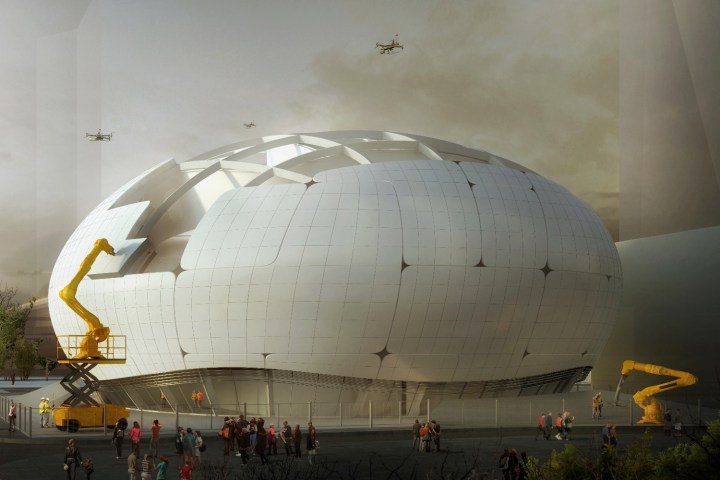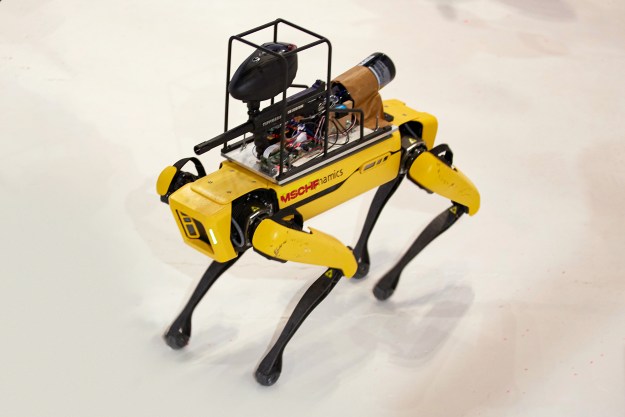
We’ve previously covered the use of construction robots for everything from houses here on Earth to proposed space habitats for far-flung locations, including Mars and the moon. Here’s one we’ve not previously come across, however: The use of construction robots to built a world-class robot museum. You’ve got to love the irony, right?
The Robot Science Museum is set to be built in Seoul, South Korea. The enormous 8,000-plus-square-foot spherical building is intended to, in the words of the local government, “support public education in robots and raise awareness” of artificial intelligence. It’s being built by Melike Altınışık Architects (MAA), the Turkish architecture firm behind futuristically iconic buildings such as the 1,200-square-foot Küçük Çamlıca TV Radio Tower in Istanbul.
“MAA’s design proposal for Robot Science Museum is focused on developing an architectural language through the use of contemporary fabrication technologies and robotic construction methodologies,” Melike Altınışık, founder of MAA, told Digital Trends. “Robotic science is constantly changing and evolving. It’s not anymore just limited to the industrial or service sector. Today, a robot can engineer a house. One of the most important elements that we are interested in is that robots take increasingly important roles in the design and construction of buildings. They can provide a more systematic and safe work environment.”

While there will be human involvement in the construction process, much of the work will be centered around robots. One team of robots will be used to assemble the museum’s curved metal facade. This includes molding, assembling, welding, and polishing the metal plates that will be used in the exterior. Another team of robots will 3D print concrete elements for the surrounding landscape. Finally, drones will be used for carrying out building inspections, providing visual references for clients, and carrying out on-site monitoring of the robot construction vehicles.
It’s not yet clear exactly what will be on display at the museum once it opens. However, if the scope of the construction project is anything to go by, visitors should expect to see a pretty definitive and formidable collection of robots from throughout the field’s history.
“The new Robot Museum is expected to start its first exhibition on site in early 2020, and is expected to be completed [in] late 2022,” Altınışık said. “After the opening, it operates as a branch system of the Seoul Metropolitan Museum.”
You’d better start saving for that holiday to Seoul. We hear that it’s particularly nice between March and May, and again from September to November.
Editors' Recommendations
- Meet the game-changing pitching robot that can perfectly mimic any human throw
- Part Terminator, part Tremors: This robotic worm can swim through sand
- World’s Fair 2.0: The mission to resurrect the greatest tech expo of all time
- Meet the Xenobots: Living, biological machines that could revolutionize robotics
- This spherical, BB-8 style robot is built to explore lava caves on the moon


